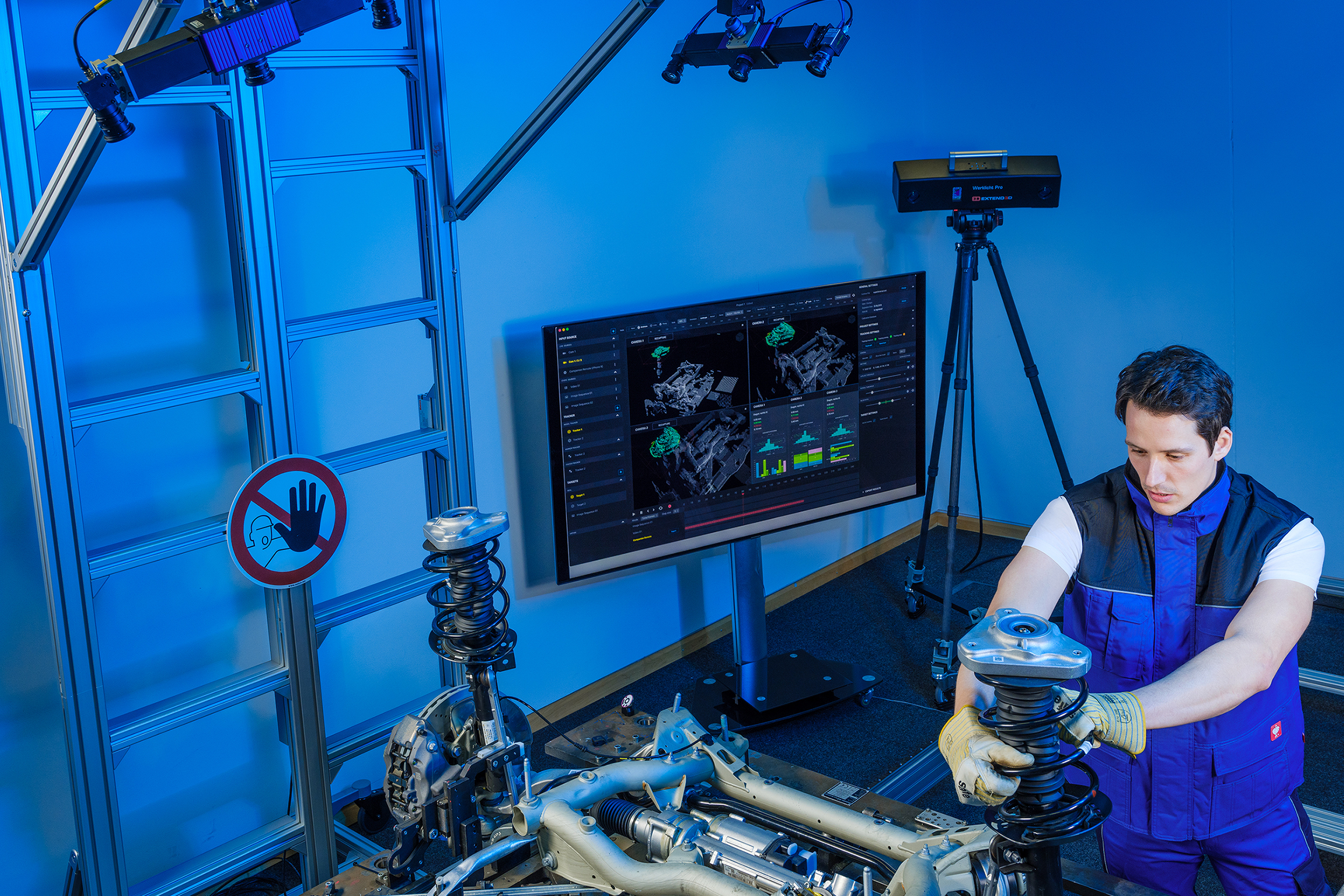Quality checks with augmented reality
Automated, computer vision-assisted systems objectivize quality control in automobile production. At the CONTROL trade fair, Fraunhofer IGD is presenting a method for capturing the actual build of a component and comparing it to the design according to the CAD data -- in real time.

(Darmstadt/Stuttgart) When a component consists of multiple parts, millimeter-precision is crucial to the quality of the end product. Manufacturing industries such as the automobile industry need reliable quality control that can still be seamlessly integrated into the production process. The Fraunhofer Institute for Computer Graphics Research IGD, together with Daimler AG, TIGRIS Elektronik GmbH and Ensenso GmbH, has developed a fully automated system for optical quality assurance in vehicle manufacturing as part of a project called “Scrutinize3D”. The goal of this project was to establish a method of quality control for complex components on the production line that was fully automated. The project concluded at the start of 2019 and the system is now ready for use, whether in car production or in other manufacturing industries.
Real-time analysis with CAD data
The system works like this: Cameras are set up at fixed locations along the production line and take pictures of the components assembled by robots or workers. The production control system, with the help of algorithms integrated by Fraunhofer IGD, checks whether all parts are present, the correct parts were used, and all parts are correctly positioned for the next production step. If the system detects a deviation, it halts the track and signals to the workers that intervention is required. The decisive advantage over comparable systems already available on the market is that this analysis compares the component against its CAD data -- the original design data -- in real time. This makes the quality check not only highly accurate but also fast. Other solutions work from reference images, meaning the camera and system need several hundred sample images to detect deviations from the norm. This requires a drawn-out teaching process that must be repeated whenever there is a change in product variant or even individual parts. Here, too, is where the Fraunhofer system shines: If vehicle components change and with it the quality check requirements, the system simply uses different CAD data as its basis. This makes it quickly and easily usable in new situations. The synchronized cameras used to image the components will be presented in an augmented reality test bench for the trade fair exhibit to assist in quality control and deviation analysis.
Quality assurance to go thanks to AR
The Fraunhofer team is also presenting its recent development at the fair with the help of the mobile check variant, which uses the camera in a tablet to image a test component and compare it to the CAD data in real time. With augmented reality (AR), incorrectly installed or missing parts are then visualized, allowing quality checks even when outside the factory -- on location to check custom-made productions or at the supplier’s, for example. The trade fair showcase with camera test bench and tablet will also demonstrate how flexibly the check system can operate and be adapted to any circumstance -- from mobile tablet camera to 3D inspection camera system on the production line.
 Fraunhofer Institute for Computer Graphics Research IGD
Fraunhofer Institute for Computer Graphics Research IGD